Tag: structural-optimization
-
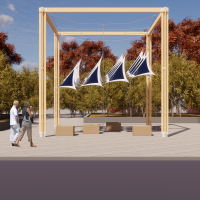 PlumaDesign, 2020
PlumaDesign, 2020With a design framework applicable to any site in the world, the Pluma installation envisions a lightweight future where structures generate more energy than they embody. Earned honorable mention at the IASS 2020 Design Competition.
Pluma demonstrates how form can follow function across disciplines and performance metrics. The design features photovoltaic membranes suspended in a lightweight cable system, resembling a flock of birds in flight.
The shape and orientation of the membrane ensemble is precisely tuned by an optimization algorithm to maximize solar radiation exposure and power generation on the site in Surrey.
Its supporting frame consists of standard timber elements assembled into cruciform sections, with simple, repeated connection details that are cost-effective. The foundation is a concrete slab hollowed out with compressed sawdust blocks as lost formwork, reducing the embodied energy compared to a typical slab by half.
-
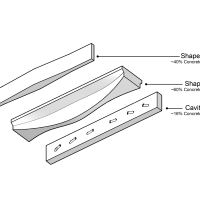 A Platform of Design Strategies for the Optimization of Concrete Floor Systems in IndiaMohamed Ismail and Caitlin Mueller, International Conference on Structures and Architecture, 2019
A Platform of Design Strategies for the Optimization of Concrete Floor Systems in IndiaMohamed Ismail and Caitlin Mueller, International Conference on Structures and Architecture, 2019This paper presents a developing platform of design strategies for concrete construction in India. More specifically, this paper will discuss three strategies for the design of horizontal spanning concrete elements. Each strategy involves a different method of structural optimization with varying performance levels based on material reduction and structural capacity. Designed for India’s affordable housing construction, the elements are constrained by the fabrication methods and materials available to India’s construction industry, merging structural design with the development of affordable housing technology. Material savings range from 16% to 50% depending on the strategy. The strategies are used to design, fabricate, and structurally test prototypes, exploring their potential for India’s construction needs.
-
 Computational Structural Design and Fabrication of Hollow-Core Concrete BeamsMohamed Ismail, Caitlin Mueller, IASS Symposium 2018: Creativity in Structural Design, 2018
Computational Structural Design and Fabrication of Hollow-Core Concrete BeamsMohamed Ismail, Caitlin Mueller, IASS Symposium 2018: Creativity in Structural Design, 2018The paper presents the results of the design method for a simply supported cavity beam, along with fabrication and load testing results. An optimization algorithm determines the location and rotation of empty plastic water bottles within a prismatic reinforced concrete beam in order to reduce material usage without reducing strength. Designed for India’s affordable housing construction, the beam is constrained by the fabrication methods and materials available to India’s construction industry. This is an effort to merge structural design tools with the development of affordable housing technology, potentially reducing the economic and environmental cost of construction through material efficiency. The designed beam results in a theoretical concrete volume reduction of 16%. Two cavity beams are designed and constructed, and then load-tested in comparison to two solid beams with the same dimensions.
-
 Structural Optimization of Cross-Laminated Timber PanelsPaul Mayencourt, Irina Rasid, and Caitlin Mueller, IASS 2018 Symposium, 2018
Structural Optimization of Cross-Laminated Timber PanelsPaul Mayencourt, Irina Rasid, and Caitlin Mueller, IASS 2018 Symposium, 2018Cross-Laminated Timber (CLT) panels are gaining considerable attention in the United States as designers focus on building more ecological and sustainable cities. These panels can speed up construction on site due to their high degree of prefabrication, and consequently, CLT is deployed for slab systems, walls and composite systems in modern buildings. However, the structural use of the material is inefficient in CLT panels. The core of the material does not contribute to the structural behavior and acts merely as a spacer between the outer layers. This project offers an alternative design of an optimized CLT panel with the goal of reducing material consumption and increasing the efficiency of this building component, which can help it become more ubiquitous in building construction.
In this paper, a theoretical model for the behavior of optimized CLT panels is developed, and this model is compared with scaled physical load tests. The results demonstrate that the theoretical model accurately predicts physical behavior. Furthermore, around 20 % of material can be saved without major change in the structural behavior. The reduced material consumption and cost of the proposed optimized CLT panels can help mitigate the ecological impact of the construction industry, while offering a new competitive building product to the market. -
 Integrated design for greenhouse in Portola ValleyDesign, 2018 - Present
Integrated design for greenhouse in Portola ValleyDesign, 2018 - PresentThis ongoing design project looks at an "eco-modernist" custom greenhouse to be built in Portola Valley, California. The objective of this greenhouse is to meet requirements for extended-season plant growth while requiring limited intervention for operation and applying approaches of structural efficiency. Tools such as our Design Space Explorer suite are used to explore and select among a wide design space that meet performance objectives to varying degrees. Local materials and custom structural joinery will be used in the greenhouse construction.
-
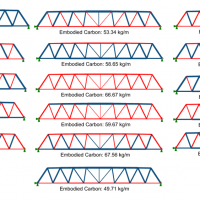 Minimizing Embodied Carbon in Multi-Material Structural Optimization of Planar TrussesResearch, 2016 - 2018
Minimizing Embodied Carbon in Multi-Material Structural Optimization of Planar TrussesResearch, 2016 - 2018Material type and quantity are important in determining the embodied carbon emissions for a buildings because both will affect the amount of carbon emitted from the material production. In particular, structural systems such as long-span trusses contribute a substantial amount to a buildings' total embodied carbon, and are the focus on this work. Two common materials for truss structures are timber and steel. While timber’s embodied carbon coefficient and density are lower than that of steel, its much lower strength means that it may not always result in the least carbon emitting structural design. As a result, the choice of the more sustainable material for any given member is dependent on factors such as the truss span or shape. Multi-material structures offer a solution to create structurally efficient structures with lower environmental impact. This embodied carbon optimization investigates truss structures of various spans using parametric modeling and numerical optimization, and studies how multi-material and single-material designs compare. This research introduces a new approach for multi-material designs for the optimization of embodied carbon and demonstrates the advantages of using structural optimization and multi-material designs for sustainability.
-
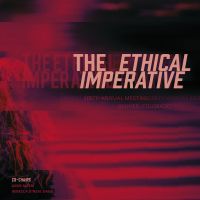 Mohamed Ismail Presents at ACSA 20182018-03-17, Tags: conceptual-design conceptual-structural-design constructabililty design-tool shell-structures structural-optimization visualization
Mohamed Ismail Presents at ACSA 20182018-03-17, Tags: conceptual-design conceptual-structural-design constructabililty design-tool shell-structures structural-optimization visualizationMohamed presented his paper entitled "Resistance Through Form: Synthesis Structures in the Design of a Residential Architecture for Khartoum, Sudan" at the Association of Collegiate Schools of Architecture's (ACSA) 106th Annual Meeting in Denver, Colorado, on March 17th, 2018. He presented his paper in the session "Architecture of the other 99%? – Power, Economy, and the Dilemma of History", and then joined a panel discussion moderated by Professor Ole Fischer of the University of Utah.
-
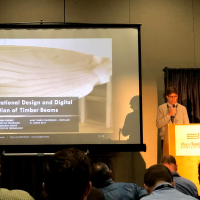 Paul Mayencourt presents at 2018 International Mass Timber Conference2018-03-21, Tags: conference digital-manufacturing optimization structural-optimization timber fabrication
Paul Mayencourt presents at 2018 International Mass Timber Conference2018-03-21, Tags: conference digital-manufacturing optimization structural-optimization timber fabricationPaul Mayencourt is presenting his work on "Digital Fabrication and Structural Optimization of Timber Beams" at the 2018 International Mass Timber Conference in Portland, Oregon on March 21, 2018. Demi Fang will also be attending the conference to represent Digital Structures.
-
 Alternatives for FEMA Disaster-Related Housing AssistanceResearch, 2017 - Present
Alternatives for FEMA Disaster-Related Housing AssistanceResearch, 2017 - PresentIn collaboration with Lincoln Laboratory and the Urban Risk Lab at MIT, Digital Structures is evaluating the current state of the FEMA post-disaster housing assistance mission with the goal of identifying improvements and proposing alternatives that will decrease costs and increase user satisfaction. The structural research seeks to address the problem of optimizing typology between a one-size-fits-all housing solution and location-specific customization by anticipating the disparity among different environmental loads around the country and imaging a system that can dynamically respond to those loads with minimal customization and cost impacts. This project entails a full analysis of multiple FEMA programs incorporating supply chain, policy, and risk assesment in coordination with a variety of groups throughout MIT.
-
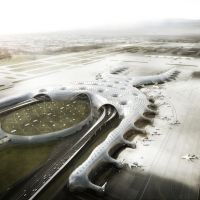 “Always question your own preconceptions”: Discussing the future of technology in architecture with Martha Tsigkari of Foster + Partners2018-02-15, Author: Demi Fang
“Always question your own preconceptions”: Discussing the future of technology in architecture with Martha Tsigkari of Foster + Partners2018-02-15, Author: Demi FangAmidst the excitement of ACADIA 2017 on MIT’s campus, we found an opportunity to sit down and chat with Martha Tsigkari, who presented the New International Airport Mexico City (2020) with her colleagues. Tsigkari trained as an architect-engineer in Greece before obtaining a master’s degree at The Bartlett’s Architectural Computation programme at UCL, which she describes as “a computer science course for designers and architects.” She has been at the Applied Research + Development (AR+D) group at Foster + Partners’ London office ever since. In this post, we synthesize some of her thoughts on the future of technology in architecture, on the art of collaborating across disciplines, and on the humility necessary for innovation. Quotes have been edited for clarity.
The main focus of Tsigkari’s role and presentation of Foster + Partners’ highly anticipated New International Airport Mexico City was “evidence in performance-driven design. It’s all about how all the analysis and optimization can be incorporated through the life of the model to make for a better solution,” Tsigkari says.
On working with Arup, the engineers on the airport project, Tsigkari says that “it was a fantastic collaboration. The design process was not conventional in that we knew how we wanted the space frame to look aesthetically, so we developed all the processes necessary to create a structurally viable and well-performing space frame. Arup was confident in the processes we had and fully adapted our topology. They would receive our permutations of the final model, analyze them, and return with the sizes of the nodes and elements required. From that feedback we would make some aesthetic decisions; if we saw some really big nodes, for example, we knew that we had to do something with the topology and the smoothing of the space frame at that location.”
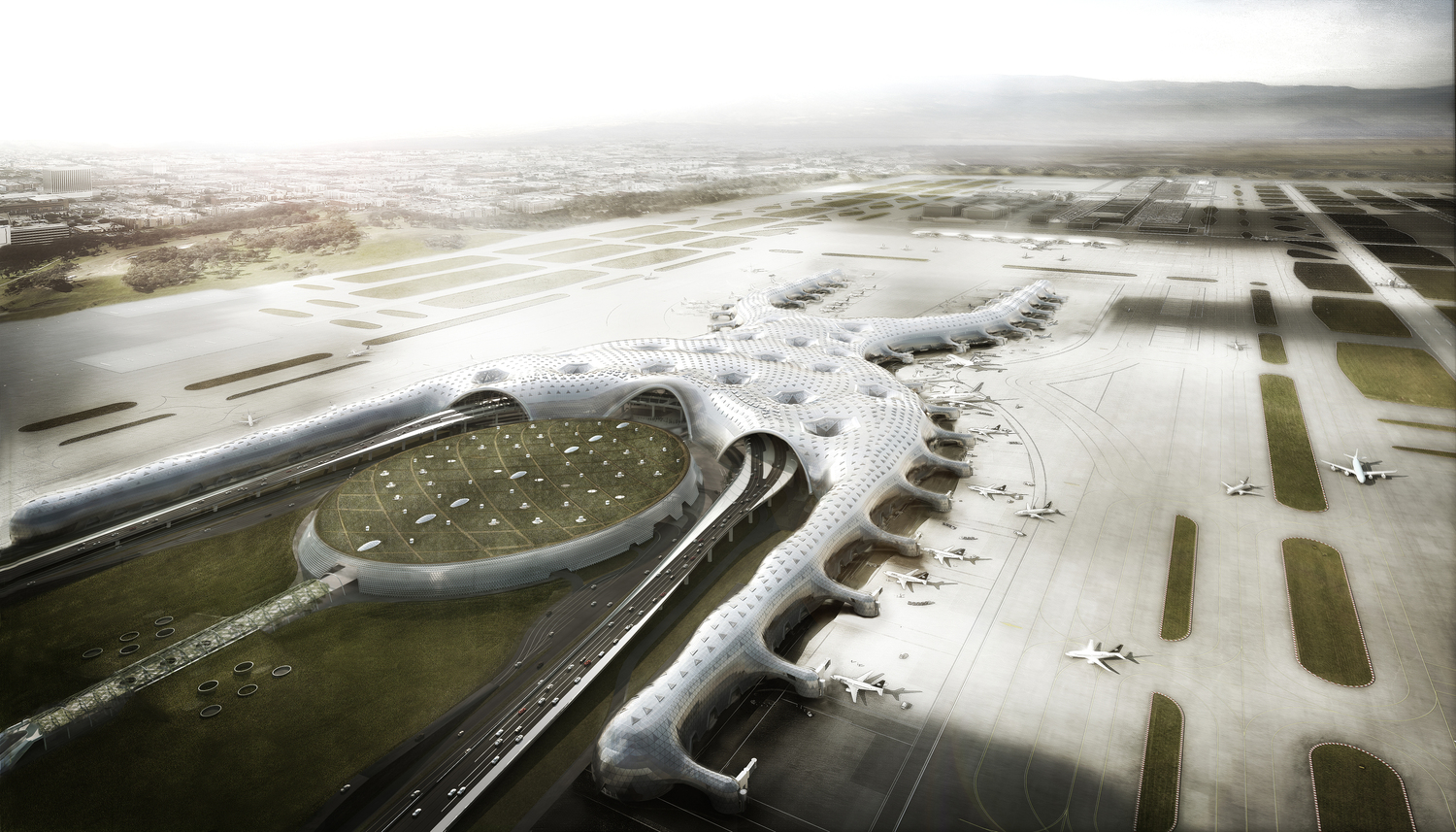 New International Airport Mexico City. Copyright Foster + Partners
New International Airport Mexico City. Copyright Foster + PartnersAside from performance-based design, the AR+D group at Foster + Partners focuses on multi-faceted and cutting-edge topics. “We see a huge future within architecture in Virtual Reality (VR),” Tsigkari says. “We also do a lot with simulations and optimization; we have written our own simulation engines that run tens or hundreds of times faster than those in the industry. I worked a lot with interoperability - making sure that this simulation works with all the different platforms that we’re using and that they talk with each other. We’re using those tools through optimization processes, whether it’s cognitive computing or genetic algorithms.
“We are also quite heavily involved with innovative interfaces to help designers understand the repercussions of their decisions very early on in the design process,” says Tsigkari. “We’re doing a lot of things with innovative materials and design-to-fabrication processes as well as looking into interesting things like the Internet of Things, seeing how we can make smarter buildings and cities that not only get constant feedback from the experiences that people have, but also better themselves without human input.
Tsigkari emphasizes the significance of nonlinear analyses and adaptive processes in future steps to improve the built environment. “There is a fundamental problem in the way we design most of our buildings: typically, it is a linear analysis for a specific pseudo-optimal state. For example, we design buildings based on the worst-case scenario of an earthquake. The resulting design is going to be useless for 90% of the time - it is only useful for the one-off chance that an earthquake happens. On the other hand, if you see how nature works, and if you embrace the idea of compliant mechanisms and nonlinear analysis, then you start embracing the ideas of embodied computation that Axel Kilian was explores in his tower, where you don’t optimize based on worst-case scenarios but instead try to design a form intelligent enough to optimize itself based on the feedback it gets and based on a specific state it always needs to return to. For me, this idea is extremely crucial. It feels like a natural next step in how we build.”
Tsigkari goes on to describe an ongoing research collaboration with Autodesk’s Panos Michalatos, Matt Jezyk and Amira Abdel-Rahmani: “We are essentially running nonlinear analyses for compliant mechanisms on the material level. More specifically, we are working with thermally actuated laminates. You can see situations where a facade is no longer a static element, but is externally actuated and adapts.
“A big part of our research right now is to understand the laminate layering required for the desired adaptations. My colleague Marcin Kosicki has been working with TensorFlow to develop a neural network, feeding in different laminates and the associated disfiguration of the material.”
Tsigkari maintains a humble, if not borderline cynical, perspective on the state of technology in architecture today. “Architecture as a profession is, I daresay, backward-looking. The industry is we are very slow to adapt to new technologies. It’s interesting to see that in the past decade, there has been a significant shift towards more computational design processes. I think what made the shift is the development of tools - for example, Grasshopper for Rhino - which made visual scripting quite intuitive. It introduced a different interface for users towards computer-science-based processes.”
How does Tsigkari train students towards such a rapidly evolving field? “What I learned at The Bartlett was not a particular software but computer science and algorithms: how to write a vanilla AI algorithm and how to potentially apply this to design problems. The trick is to get the underlying knowledge of what these processes are and how they could be used. You can use that knowledge in whatever software you want as long as you know what it is, how it works, and what you can expect from it.
“If what we see in Grasshopper is the skin of computational design, what we’re teaching is the bones and muscles of it; the underlying principles of computation. We are teaching algorithms that are not new - other fields have been using these for the past 60 years. In architecture we have started using them in the past decade. The reality is that we’re 60 years behind industries like rocket science, the chemical industries, or the army. It’s interesting to see how people feel extremely proud of using tools that have been around for over half a century and have been successfully used in many other industries with quite innovative outcomes.”
The interdisciplinary nature of the AR+D team helps. “We have people who have architectural backgrounds or engineering backgrounds, or both, but we also have artists, computer scientists, aeronautical engineers... I think that looking at what is achieved in other industries is absolutely key to being able to innovate within our own industry in terms of building processes, materials, and even techniques. Only now are we starting to look at how swarm robotics can affect buildings; techniques like these have been used extensively in other industries in the past with fantastic results. This kind of cross-referencing that can be beneficial for our industry.”
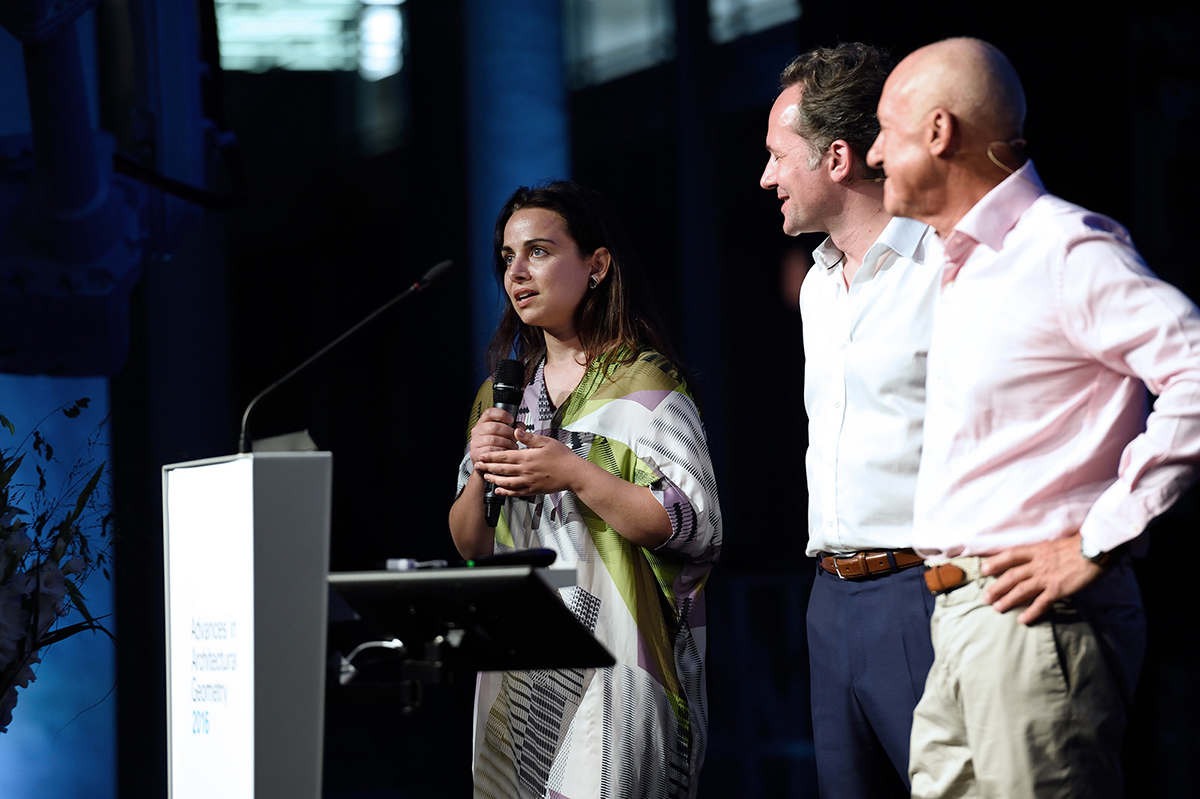 Martha Tsigkari with Francis Aish and Norman Foster at the keynote of Architectural Advances in Geometry Symposium 2016. Image courtesy of AAG 2016
Martha Tsigkari with Francis Aish and Norman Foster at the keynote of Architectural Advances in Geometry Symposium 2016. Image courtesy of AAG 2016It is by chance that Tsigkari occupies an unusual career path at the intersection of practice and academia. “My involvement with teaching is really driven by my late mentor, Alasdair Turner. He initiated the master’s programme I’m teaching at now, and he was this fantastic personality - a computer scientist, who had a lot of interest in tying computer science, architecture, and philosophy together.
“Alasdair took me from a world where I was unsure where I wanted to be and led me down a rabbit-hole to a completely different world of possibilities. After his untimely death, I kind of took over his lectures on genetic programming. For me, teaching is about extending his legacy to the newer generations, helping people the same way I was helped, to understand the art of the possible. So that’s how I ended up in academia.
“I actually find it extremely hard to be both in academia and in industry because they’re both very time-consuming. You need to be very strict with your time,” says Tsigkari. “Having said that, it gives fantastic opportunities to educate newer generations with notions you have in industry. I do not simply show my students an algorithm, but I can also show them its potential by showing them the projects I’ve used it on. It gives people a direct connection between the algorithm (which is quite abstract) and what can be done with it (which is quite tangible). I find that this connection is really interesting, and it’s very interesting for the students as well. I’ve always gotten very positive feedback about having that understanding.
Asked to give advice to students aspiring to be architects or engineers, Tsigkari pauses and admits, “This is a very difficult question. I’m horrible at giving advice; I feel that people should be their own advisers and they should do what feels right for them.”
Despite these comments, Tsigkari gradually offers some striking pieces of advice as she continues. “I think you should always do what feels right for you, and that you should always question everything. I would say you should also always question your own preconceptions of what things are. So if you are on the verge between architecture and engineering, question what these two mean for you. Your preconceptions are going to lead you down one road that may not be what you think it was. Step back; don’t make big plans. Feel your way through things that you’re interested in, and something will always come up.”
Citing her own experience, Tsigkari recalls that “as with everything in my life, I had no plans. I never saw myself in a certain position, ever. Other people had plans for me, which I had never followed. I went to a very traditional school, and I learned a lot, but they were not things I wanted to to do for the rest of my life. I mutated, diversified, and changed myself in order to pursue what I wanted.”
Tsigkari continues, “If I were to advise something, it would be to not tag yourself. Do not call yourself an architect or an engineer or a computer scientist - nowadays, I think the da Vincian perception of a person is what is closer to what we need in order to innovate. It is important to understand various disciplines while always saying to yourself that you know very, very little. That will always drive you to become better. It will take the danger out of what you do and will make a better person out of you.
“I look back at my university years with a sense of newfound introspection. Had I known then what I know now, I would never have chosen architecture - never. I would possibly go into artificial intelligence, robotics, or neuroscience, and do something completely different, because I see even now that these are the things that are interesting to me.”
Reflecting briefly on the direction in which she hopes to steer her future, Tsigkari continues, “I guess that I am trying to shift my path towards those topics that I am interested in. It becomes more difficult as time goes by and you get more responsibility at work, but, you know... I don’t think it’s ever too late.”
-
 Design, mechanics, and optimization of interlocking wood jointsResearch, 2017 - Present
Design, mechanics, and optimization of interlocking wood jointsResearch, 2017 - PresentDespite the longstanding craft of interlocking wood joints in North American and East Asian carpentry, modern timber structures frequently use metal connectors in mid-rise construction. This research explores the structural capabilities of interlocking joints between beams and columns for mid-rise timber frame construction. Research methods include parametric design, structural modelling, digital fabrication, and experimental load testing.
-
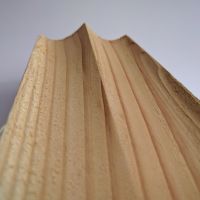 Computational Structural Optimization and Digital Fabrication of Timber BeamsResearch, 2016 - Present
Computational Structural Optimization and Digital Fabrication of Timber BeamsResearch, 2016 - PresentStructural optimization techniques offer means to design efficient structures and reduce their impact on the environment by saving material quantities. However, until very recently, the resulting geometrical complexity of an optimized structural design was costly and difficult to build. Today, fabrication processes such as 3D printing and Computer Numeric Control (CNC) machining in the construction industry reduces the complexity to produce complex shapes.
This research aims to combine computational structural optimization and digital fabrication tools to create a new timber architecture. A key opportunity for material savings in buildings lies in ubiquitous structural components in bending, especially in beams. This research explores old and new techniques for shaping structural timber beams.
-
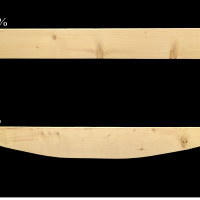 Computational Structural Optimization and Digital Fabrication of Timber BeamsPaul Mayencourt, Joaquin S. Giraldo, Eric Wong, and Caitlin Mueller, Proceedings of the International Association for Shell and Spatial Structures (IASS) Symposium, 2017
Computational Structural Optimization and Digital Fabrication of Timber BeamsPaul Mayencourt, Joaquin S. Giraldo, Eric Wong, and Caitlin Mueller, Proceedings of the International Association for Shell and Spatial Structures (IASS) Symposium, 2017This paper focuses on optimizing beams made of solid timber sections through a CNC subtractive milling process. An optimization algorithm shapes beams and reduces the material quantities by up to 50% of their initial weight. A series of these beams are then fabricated and load tested, and their strength is compared to standard timber sections.
-
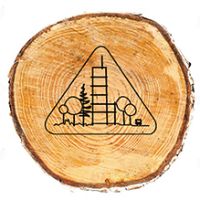 Paul Mayencourt presents at Wood at Work Montreal2017-10-27, Tags: computation fabrication digital-manufacturing embodied-carbon structural-optimization timber
Paul Mayencourt presents at Wood at Work Montreal2017-10-27, Tags: computation fabrication digital-manufacturing embodied-carbon structural-optimization timberPaul Mayencourt presented research on opportunities for using structural optimization and digital fabrication to shape wood structural beams and building components at the third annual Wood at Work conference in Montreal.
-
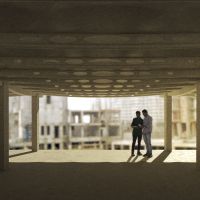 Low-Cost, Low-Carbon Structural Components for Housing in IndiaResearch, 2017 - Present
Low-Cost, Low-Carbon Structural Components for Housing in IndiaResearch, 2017 - PresentIn More Economically Developed Countries (MEDCs) such as the United States, labor costs constrain affordable construction. As a result, architects and engineers design with systems that reduce the time and complexity of assembly – making use of standardized structural components, nominal sizing, and elements that are not materially efficient or optimal for estimated loading conditions. On the other hand, in Lower Economically Developed Countries (LEDCs) material costs, rather than labor, inhibit affordable construction. Conservatively, materials account for an estimated 60-80% of construction costs in LEDCs such as India. This incongruity highlights an opportunity for structural components optimized for material efficiency and suit the context of a developing LEDC such as India.
This research explores the design of structural components and standards that could be disseminated by partners involved in India’s affordable housing construction. It is an application of emerging technology and practices in structural optimization. The exploration will involve not only defining ideal structural forms, but also designing the mechanisms required to build and assemble these components – reducing the environmental and economic costs of construction through the entire process of realization. This research is being done with the support and guidance of the MIT Tata Center.
-
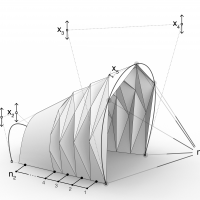 Structural optimization of folded plate structuresResearch, 2016
Structural optimization of folded plate structuresResearch, 2016This project explores the potential of folded plate structures to be a structurally optimized architectural typology.
A custom Grasshopper script was developed in which the designer can determine the form of a spanning folded plate structures by adjusting the control points of two curves through which the base surface is lofted. The input geometry is then connected to two different optimizers, Goat and Digital Structure's own Stormcloud, to generate different optimized alternatives close to the base shape.
The findings demonstrated that the folded plate typology inherently performed better than a continuous shell of the same shape. Structural optimization was shown to offer a wide design space for the global morphology of folded plate structures.
A video overview of the parametric modeling process and a few case studies is presented here.
-
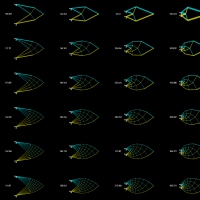 4.450: Computational Structural Design and OptimizationClass, 2015 - Present
4.450: Computational Structural Design and OptimizationClass, 2015 - PresentThis research seminar focuses on contemporary applications of computation for creative, early-stage structural design and optimization for architecture. Topics covered include computational design fundamentals, including problem parameterization and formulation; design space exploration strategies, including interactive, heuristic, and gradient-based optimization; and computational structural analysis methods, including the finite element method, graphic statics, and approximation techniques. A range of historical and contemporary examples of structural optimization in theory and practice are introduced and investigated as case studies. Students will also complete semester-long individual research projects, which will focus on the development, implementation, or application of an innovative computational approach for structural design. Project images by Juney Lee, Chikara Inamura, Mike Stern, and Geoff Tsai.
-
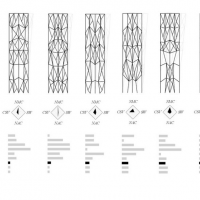 Integrating constructability into conceptual structural design and optimizationAbbigayle Horn, MIT MEng Thesis, 2015
Integrating constructability into conceptual structural design and optimizationAbbigayle Horn, MIT MEng Thesis, 2015This thesis encourages interdisciplinary design exploration through consideration of constructability in conceptual structural design. Six new metrics are introduced to measure variability in structural components, impose reasonable construction constraints, and encourage standardization of structural characteristics which can improve the ease, efficiency, and costs of construction. This thesis applies these original constructability metrics to truss façade structures for an objective, quantitative comparison with structural performance metrics. The primary contribution of these new metrics is a computational method that can aid in identifying expressive, high-performing structures in the conceptual design phase, when decisions regarding global structural behavior have the greatest impact on multi-objective project goals.
-
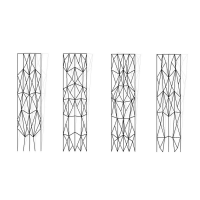 Integrating constructability into conceptual structural design and optimizationResearch, 2014 - 2015
Integrating constructability into conceptual structural design and optimizationResearch, 2014 - 2015This research encourages interdisciplinary design exploration through consideration of constructability in conceptual structural design. Six new metrics are introduced to measure variability in structural components, impose reasonable construction constraints, and encourage standardization of structural characteristics which can improve the ease, efficiency, and costs of construction. This research applies these original constructability metrics to truss facade structures for an objective, quantitative comparison with structural performance metrics. The primary contribution of these new metrics is a computational method that can aid in identifying expressive, high-performing structures in the conceptual design phase, when decisions regarding global structural behavior have the greatest impact on multi-objective project goals.
-
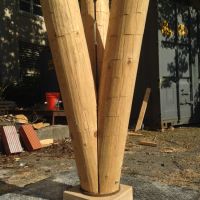 New Structural Systems in Small-Diameter Round TimberAurimas Bukauskas, MIT BSA Thesis, 2015
New Structural Systems in Small-Diameter Round TimberAurimas Bukauskas, MIT BSA Thesis, 2015Trees, when used as structural elements in their natural, round form, are up to five times stronger than the largest piece of dimensioned lumber they could yield. Additionally, these whole-timbers have a lower effective embodied carbon than any other structural material. When combined into efficient structural configurations and joined using specially-engineered connections, whole- timber has the potential to replace entire steel and concrete structural systems in large-scale buildings, bridges, and infrastructure. Whole-timber may be the most appropriate structural solution for a low-carbon and fully renewable future in both developed temperate regions and the developing Global South. To reduce barriers to adoption, including project complexity and cost, a standardized “kit of parts” in whole-timber is proposed. This thesis proposes new designs for the first and most important element of this kit: a structurally independent column in whole-timber. A 20’ compound column in whole-timber is prototyped at full-scale. New, simple calculation methods are developed for estimating the buckling capacity of tapered timbers. Based on conservative assumptions, the embodied carbon of whole-timber column systems is shown to be between 30% and 70% lower than conventional steel systems.


